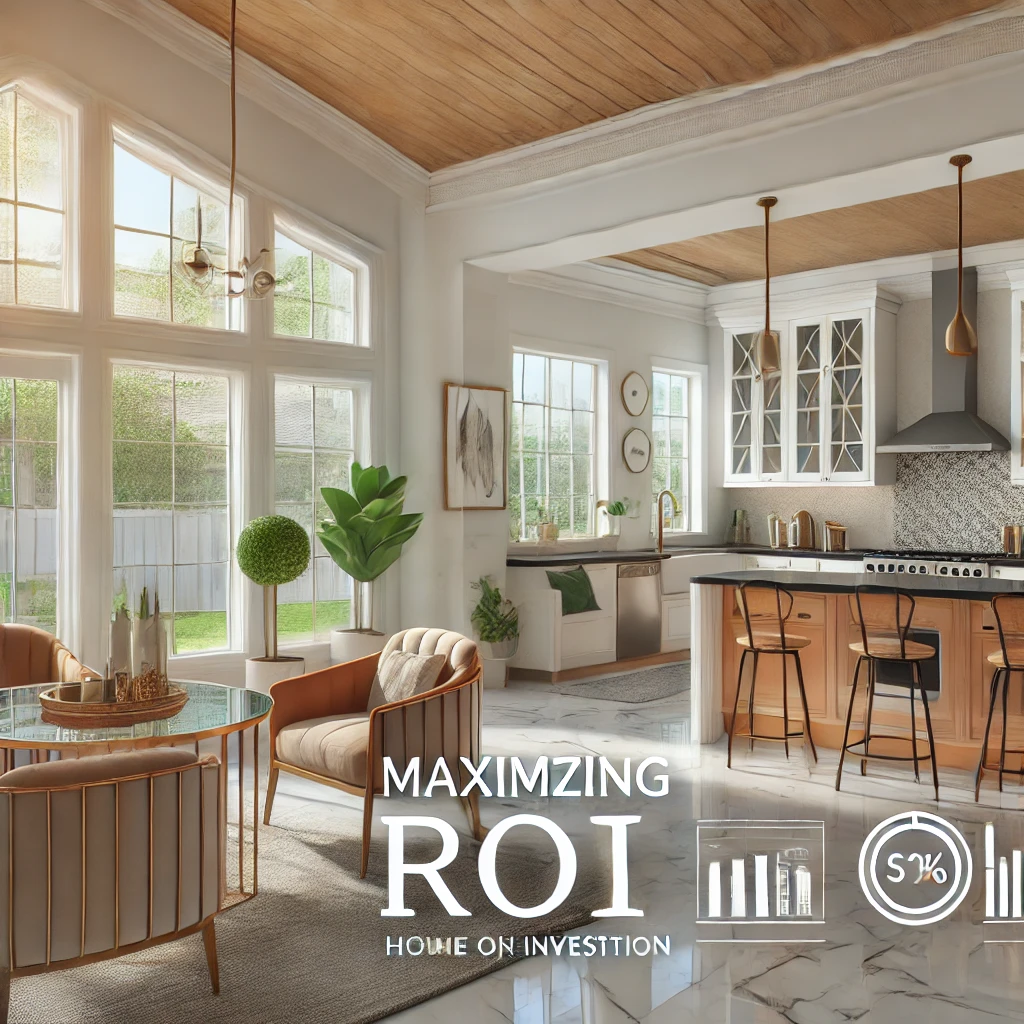Flipping homes can be a lucrative venture if done correctly, but to truly succeed, your primary focus should be on maximizing your return on investment (ROI). In competitive markets like Seattle, where property values are high and renovation costs can quickly spiral, understanding how to get the most out of your flip is essential.
This guide will show you how to strategically boost your ROI by making smart investments, controlling costs, and appealing to the right buyers. Whether you’re a seasoned flipper or new to the game, these tips will help you increase profitability while minimizing risk.
1. Buy Smart: The Key to Higher Profits
Your profit margin starts with the price you pay for the property. The lower your purchase price, the greater your potential for ROI. However, buying smart isn’t just about finding the cheapest property—it’s about choosing the right property in the right neighborhood.
- Look for Underpriced Properties: Find homes that are under market value because they need cosmetic updates or minor repairs, but avoid properties with major structural issues unless you have the expertise and budget to handle them. In Seattle, you can often find good deals in up-and-coming neighborhoods like Georgetown or White Center that are poised for appreciation.
- ARV (After Repair Value): Always calculate the after repair value (ARV) of the property. This is the estimated value of the home after renovations. A good rule of thumb is to pay no more than 70% of the ARV, minus the cost of repairs. For example, if the ARV is $500,000 and repairs will cost $100,000, you shouldn’t pay more than $250,000 for the property.
Pro Tip: Use tools like Zillow or Redfin to research recent sales in the area and get a clear idea of what similar homes are selling for. Understanding the local market is key to buying properties that will yield a higher ROI.
2. Focus on High-ROI Renovations
Not all renovations will give you a significant return. To maximize ROI, focus on upgrades that provide the most value to buyers. This typically includes kitchens, bathrooms, and curb appeal.
- Kitchen and Bathroom Upgrades: These are the two rooms buyers are willing to pay more for. Kitchen renovations can include upgrading to modern appliances, new countertops, and energy-efficient fixtures. Similarly, bathroom upgrades like new vanities, updated tile, or energy-saving water fixtures can dramatically increase the value of the home.
- Curb Appeal: First impressions matter. Investing in landscaping, a fresh coat of paint, or even upgrading the front door can increase a home’s appeal. In Seattle’s market, where buyers are often looking for homes that are move-in ready, curb appeal can make a significant difference in how quickly your flip sells.
Pro Insight: Avoid over-improving the property. For example, if you’re flipping a home in a modest neighborhood, installing luxury finishes like marble countertops or high-end fixtures may not yield a higher return. Stick to quality upgrades that fit the area’s market value.
3. Control Your Renovation Costs
One of the quickest ways to derail your ROI is to lose control of your renovation budget. To stay profitable, you need to manage costs carefully while ensuring the home is renovated to a high standard.
- Set a Realistic Budget: Before starting the project, establish a detailed budget for the renovations. Include all materials, labor, permits, and unexpected costs. In competitive markets like Seattle, where construction labor is in high demand, costs can rise quickly, so it’s essential to factor in a 10-15% contingency fund for unforeseen expenses.
- Negotiate with Contractors: Don’t just go with the first contractor you find—get multiple bids and negotiate the best price for labor and materials. In some cases, offering to pay in installments tied to project milestones can help you secure a better deal.
Pro Tip: While it’s important to keep costs down, avoid cutting corners on crucial aspects like structural repairs or essential systems (plumbing, electrical). Buyers will pay more for quality, and skimping on these areas could cost you more in the long run if problems arise during inspections.
4. Appeal to Your Target Buyer
Understanding who your target buyer is will help you make decisions that appeal to them and ensure a quicker sale at a higher price.
- Families: If the home is in a family-friendly neighborhood, consider adding features that appeal to this demographic, such as open-concept kitchens, backyard spaces, and energy-efficient appliances. In Seattle’s Ballard or Green Lake neighborhoods, for example, homes that cater to families often sell faster and for a premium.
- Young Professionals: In more urban areas like Capitol Hill or South Lake Union, where young professionals are looking to buy, focus on modern finishes, smart home technology, and proximity to public transit. Features like home offices and flex spaces are also in demand due to the rise of remote work.
Pro Insight: Research the buyer profile in your area and tailor your renovations accordingly. A home designed for a young family will have different needs and priorities than a condo targeted at tech professionals.
5. Time Your Sale Strategically
Timing is a critical factor in maximizing your ROI. Seattle’s housing market tends to be strongest in the spring and summer months, when buyers are more active. Listing your flip during these peak times can lead to faster sales and multiple offers.
- Avoid the Slow Season: In Seattle, the real estate market tends to slow down during the winter months, particularly in December and January. If your renovation finishes during this period, consider waiting until spring to list your home to get the best possible price.
- Market Conditions: Keep an eye on broader market trends and interest rates. Rising interest rates can impact buyer affordability, while a competitive market with limited inventory may push buyers to act faster and pay more.
Pro Tip: If you’re working with a real estate agent, discuss the best time to list your home based on current market conditions. Timing your sale strategically can make a significant difference in the final selling price.
6. Market the Property Effectively
Even a beautifully renovated home won’t sell if no one knows about it. Effective marketing is key to attracting the right buyers and maximizing your profit.
- Professional Staging: Consider staging the home to showcase its full potential. Staged homes often sell faster and for higher prices because they help buyers visualize how the space can be used. In Seattle’s competitive market, buyers are looking for homes that feel move-in ready and professionally staged homes tend to stand out.
- High-Quality Photography and Videography: Invest in professional real estate photography to showcase your property in the best light. Virtual tours and drone footage can also make your listing stand out, especially as more buyers begin their search online.
Pro Tip: Leverage social media and online platforms like Zillow, Redfin, and Realtor.com to get your listing in front of a broader audience. In a city like Seattle, where many buyers are tech-savvy and do extensive research online, high-quality photos and a strong online presence are essential.
Conclusion
Maximizing ROI on your home flip requires a combination of smart purchasing, cost control, and an understanding of your target market. By focusing on high-impact renovations, controlling your budget, and appealing to the right buyers, you can significantly boost your profits and ensure a successful flip. In a competitive market like Seattle, it’s crucial to stay strategic—buy smart, renovate wisely, and market effectively to achieve the highest possible returns on your investment. With the right approach, you can turn your next flip into a highly profitable venture.





